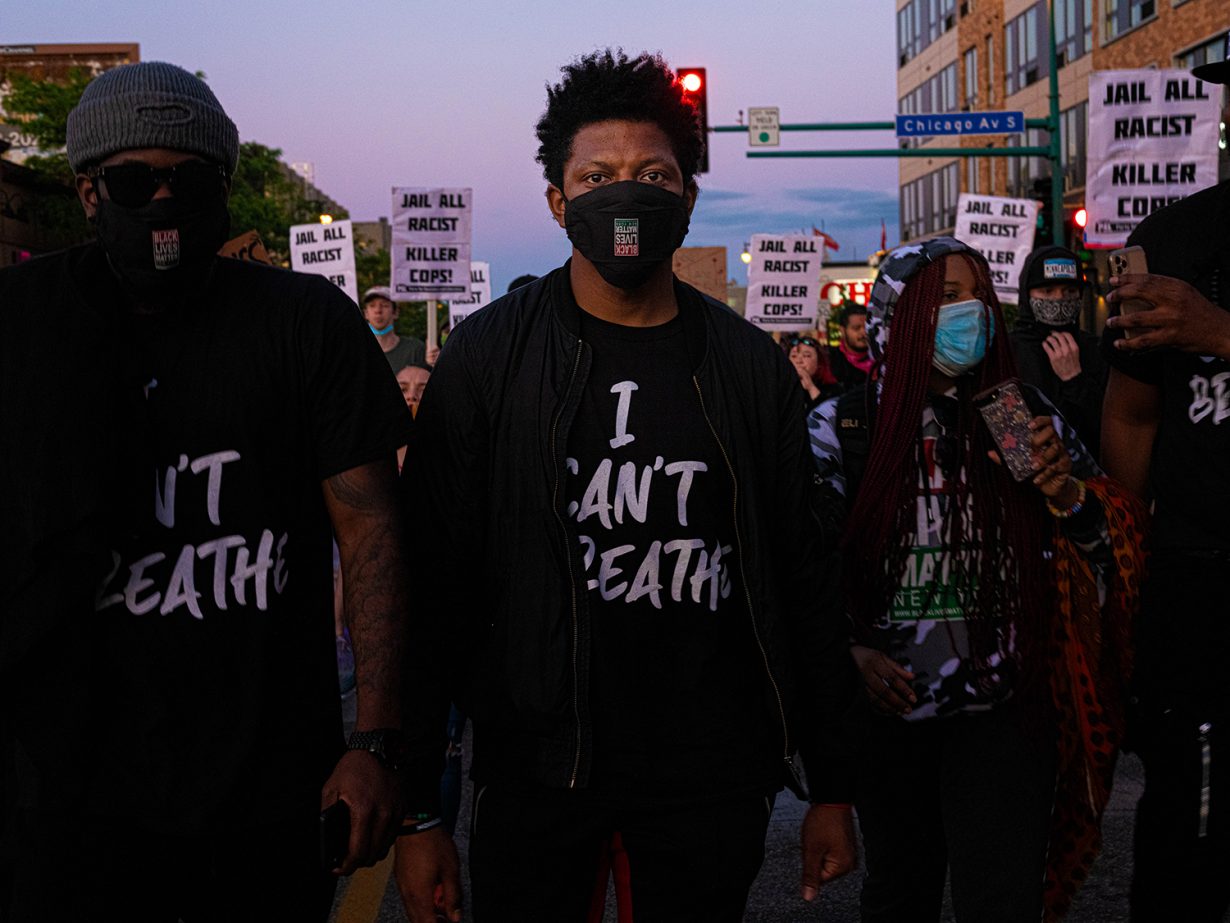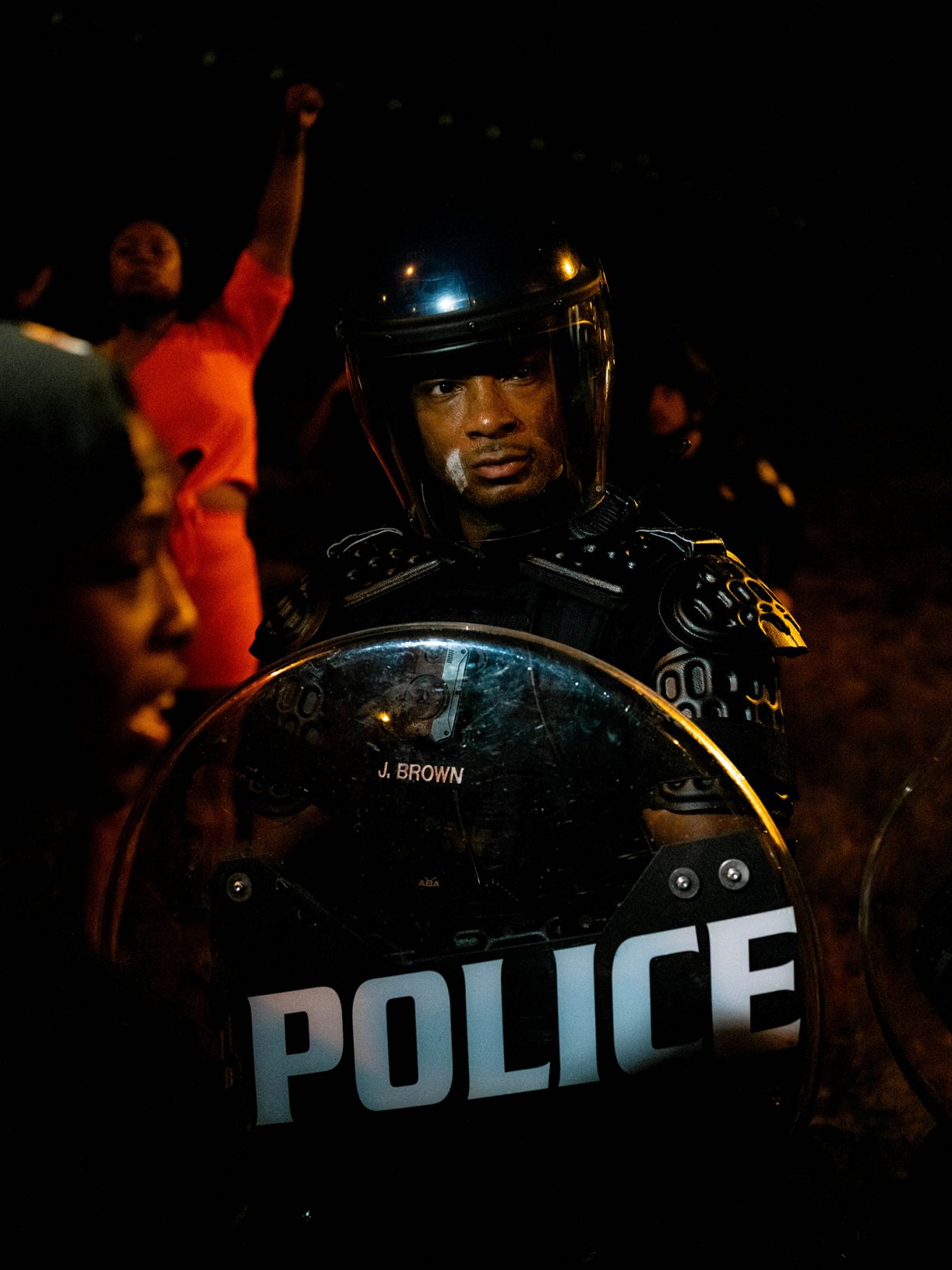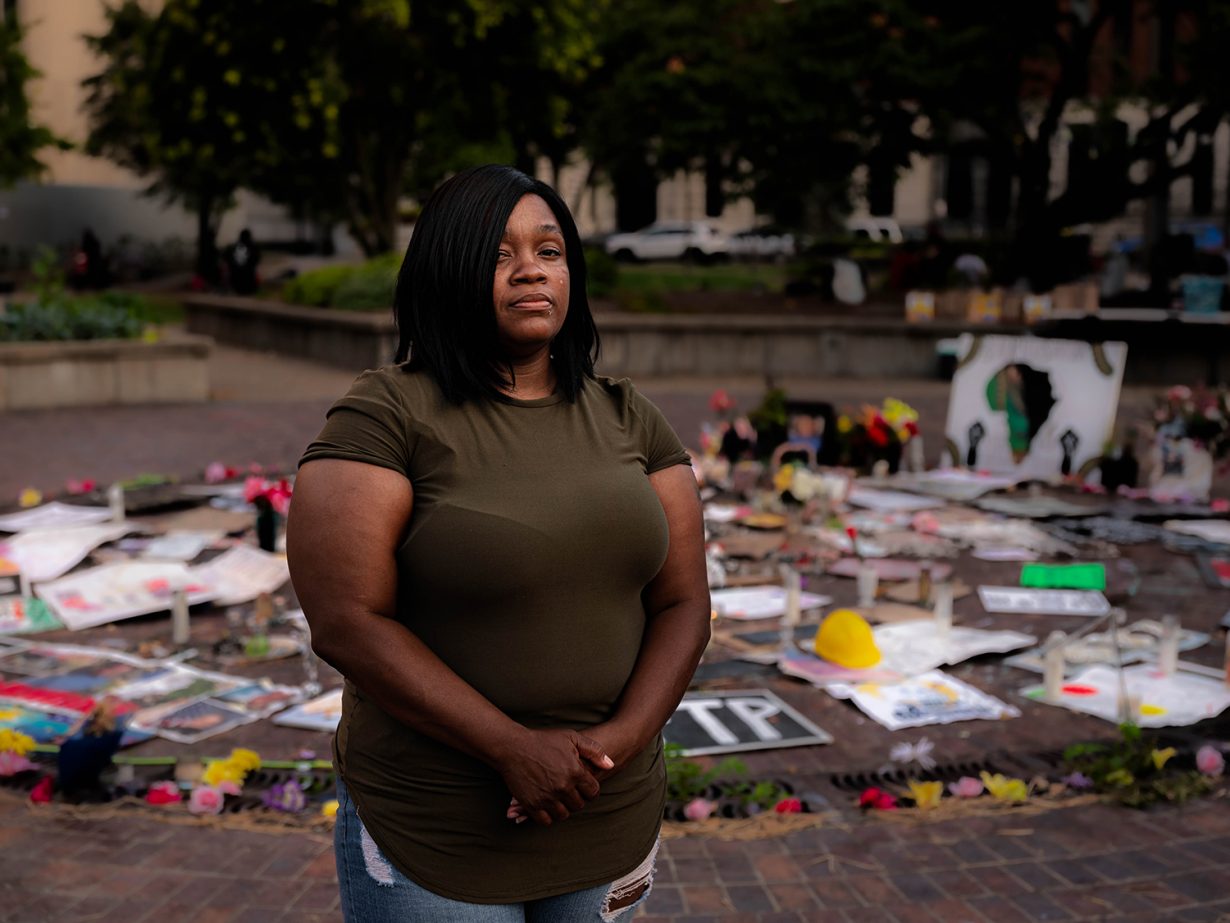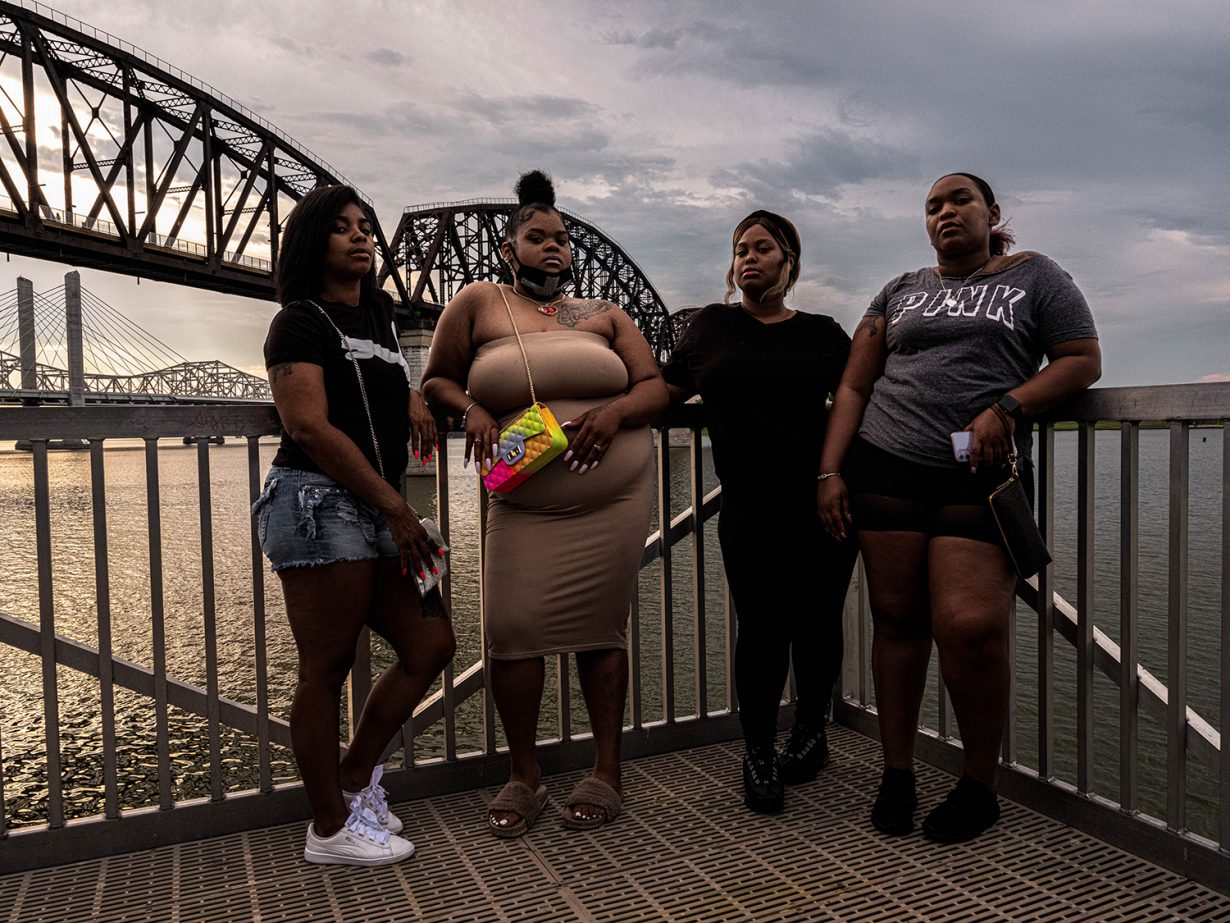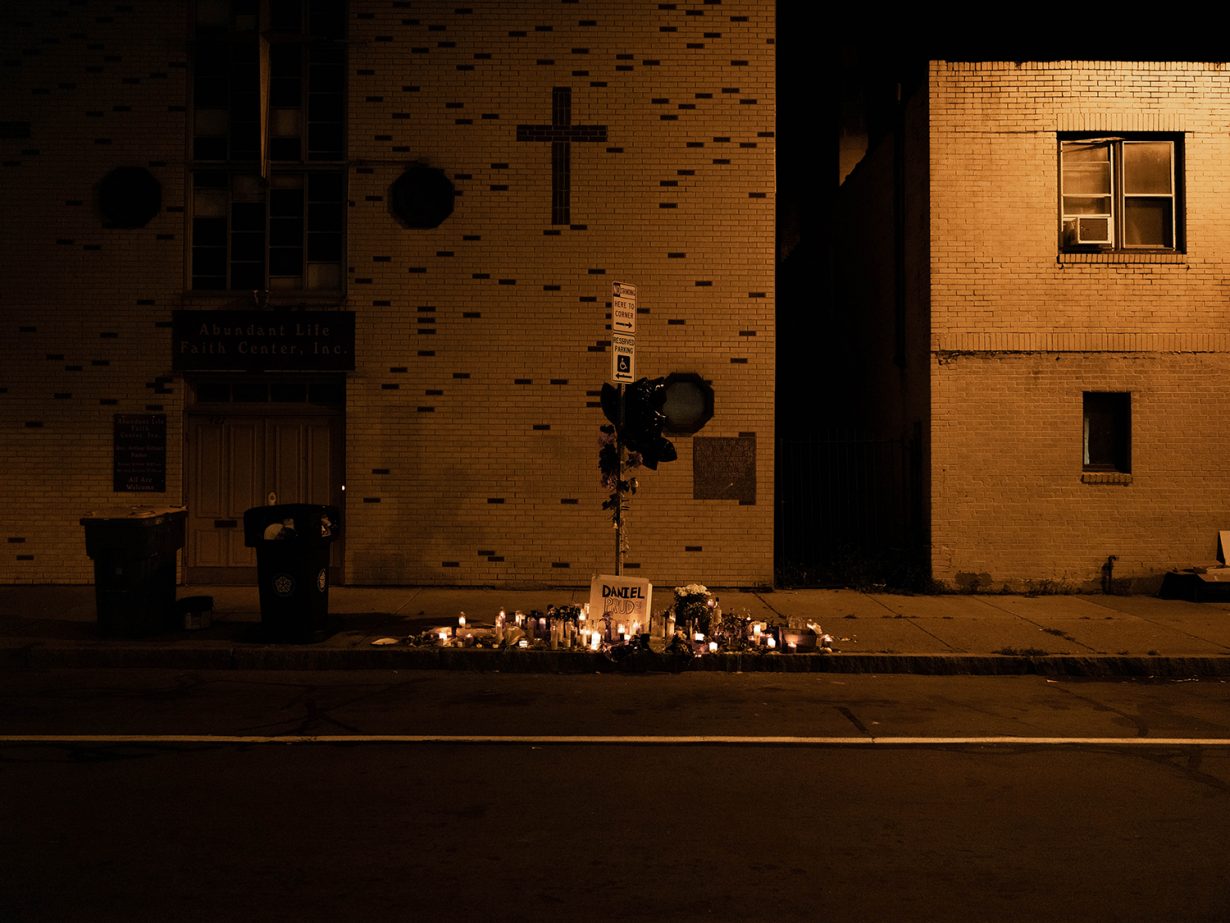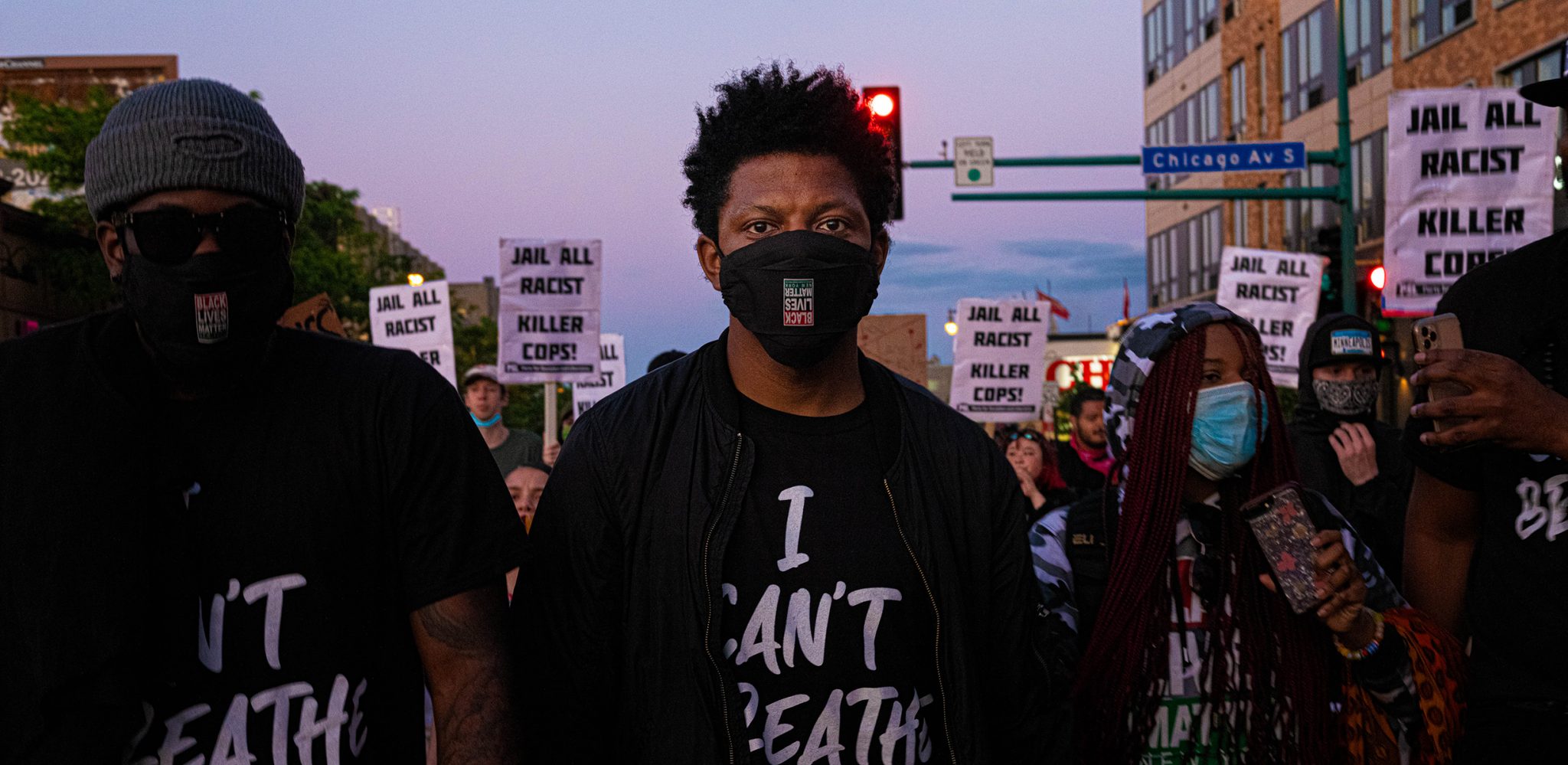A portfolio of powerful photography documents the experiences of Black people in the US, in the face of police brutality and systemic racism
Along with the rest of the world, I was coping with the effects of social isolation during New York’s shutdown in response to COVID-19. Since then, the pandemic has changed our lives as we know it, yet for Black Americans this virus hasn’t been the only trial we’ve faced. Racism and police brutality seem to lie in wait for our lives. Much of my photographic work aims at shedding light on these and other issues within the Black diaspora.
On 25 May 2020, George Floyd, an unarmed Black man, was murdered by Minneapolis police in the street. Outrage, protests and social media all erupted as the video footage circulated of a police officer forcing his knee to Floyd’s neck for over eight minutes, sequentially choking him to death while three other officers aided the act, with bystanders watching. “I CAN’T BREATHE” escaped Floyd numerous times during the confrontation as he called out to his already deceased mother, straining for his final breaths.
These words became an outcry, a plea and a question of whether police can see humanity. It’s a phrase we’ve heard before and it echoes, reminding us of the lack of compassion and empathy, and the brutal nature that policing Black bodies foregrounds. Eric Garner and countless others cried out, “I can’t breathe” as police officers took their lives. When Floyd’s life was stolen, the entire world’s heart broke. I felt it, too. For so long, white America has drawn upon reasons to feel impartial towards law enforcement’s killing of Black people. However, with no other distractions during a pandemic, the world watched as police officers again revealed an undeniable act of racism to the masses. American citizens had no choice but to watch and choose what side of history they would be on.
After hearing the news of Floyd, I was compelled to travel from Rochester, New York, to Minneapolis, Minnesota, not only to document the protests but to bear witness to the stories of this community and see its truth. Unfortunately, my time on the ground didn’t stop with Floyd’s death. I drove to Atlanta, Georgia, and the very night I arrived, word began to circulate about the police killing of Rayshard Brooks. I followed Breonna Taylor’s case in Louisville, Kentucky, and the revelation of the murder of Daniel Prude in my hometown. I witnessed first-hand the stories of these communities, families of the deceased and protesters laying it all on the line. The summer of 2020 overlapped with what seemed like war zones and standoffs between police and the demonstrators who just wanted justice. Fires, tear gas, rubber bullets, riot gear and curfews appeared to burn America’s illusion of justice and an intact democracy.
As this year closes, I can’t help but reflect on the nation’s notion of progress and what remains to be done. This year has been a worldwide acknowledgment of the Black Lives Matter movement, an admission that there’s a problem of degradation of Black people worldwide, especially in the United States, and that it’s a systemic and historic one.
Joshua Rashaad McFadden is an American visual artist whose primary medium is photography. His solo exhibition I Believe I’ll Run On opens at the George Eastman Museum, Rochester, on 9 July 2021.

